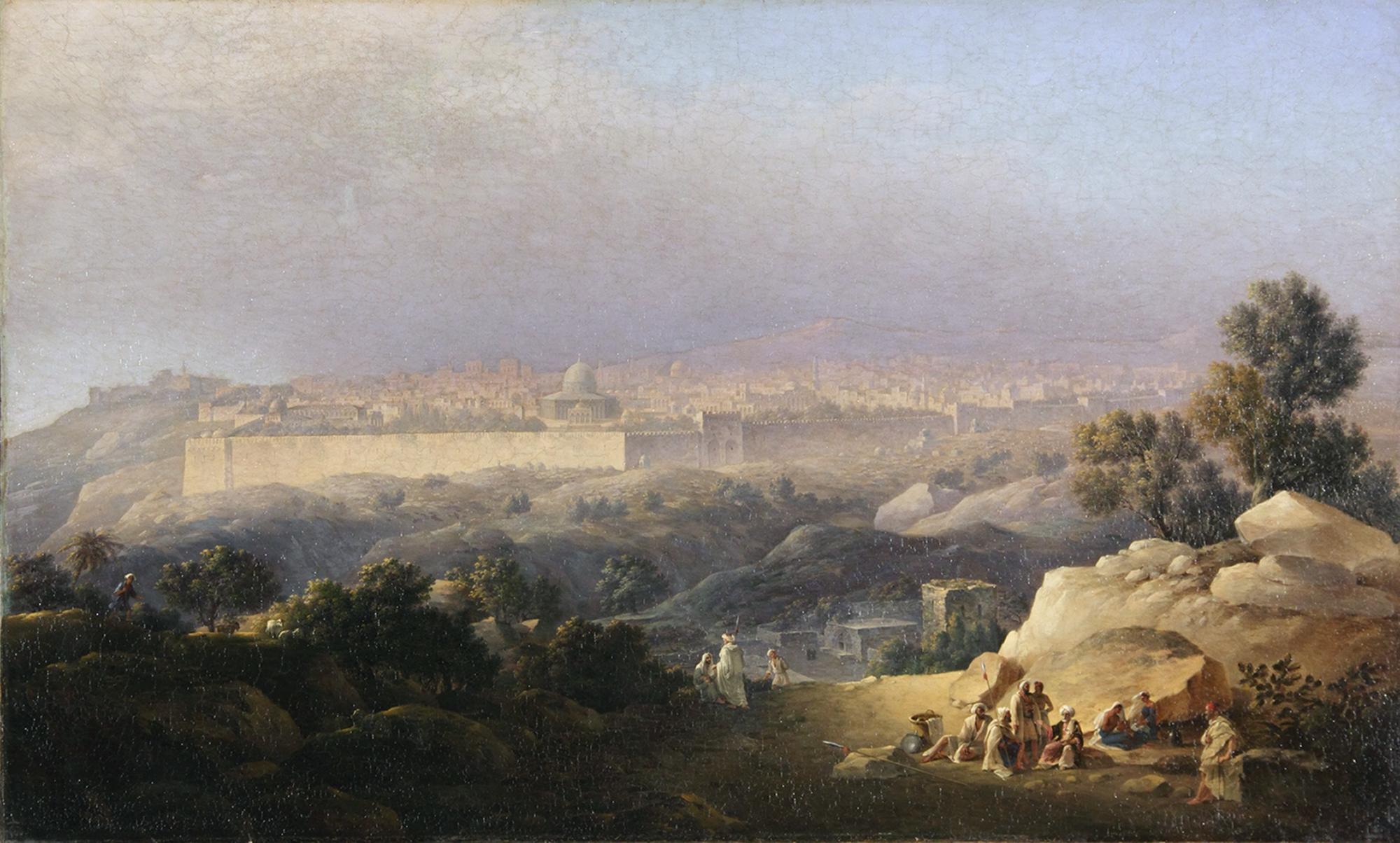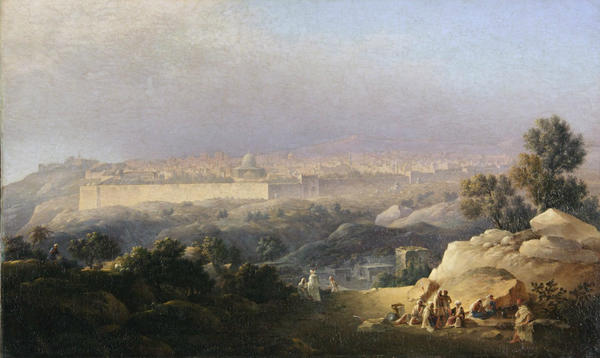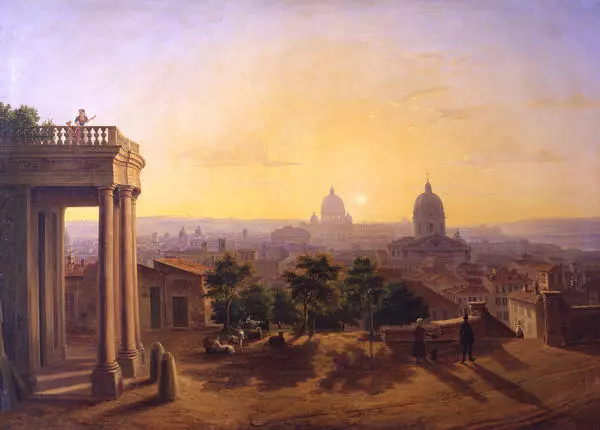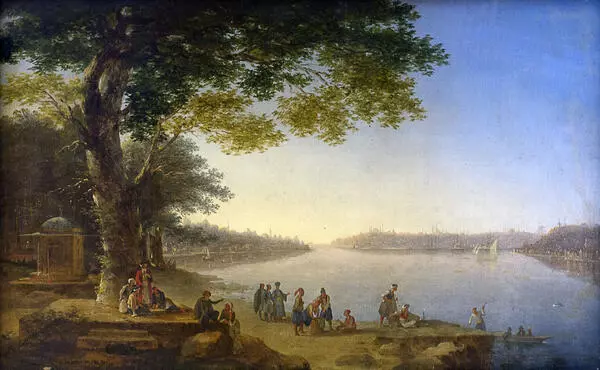Maxim Vorobyov is a painter who occupies a significant place in the history of Russian art as an artist and mentor of a whole generation of landscape painters. For forty years he was a professor at the Academy of Arts. Among his students were famous painters: I. Aivazovsky, V. Lebedev, S. Zaryanko, and the brothers Chernetsov.
All his life, Vorobyov painted landscapes of his beloved Saint Petersburg, Moscow, the cities of Europe and the Middle East. The composition of each of his landscapes was carefully thought out. Vorobyov was probably the first painter of the Russian school to combine in paintings the tonal-color solution with the entire depicted space. Soft silvery, bluish shades of the sky were included in the image of water, the walls of buildings, and greenery. A similar interpretation of the landscape was innovative for that time.
The painting ‘View of Jerusalem’ in the Vrubel Museum collection was created from the impressions of a trip to Palestine. From the spring of 1820 to the spring of 1821, Vorobyov was on a trip to the Middle East. As an architect and painter, he became part of the diplomatic mission of Dmitry Dashkov, to visit the Ottoman Empire. The main purpose of the artist was to sketch the most important Christian shrines, as well as the views and plans of the Church of the Holy Sepulcher in Jerusalem. The artist made many drawings, watercolors and painted sketches. After returning home, he presented the ‘portfolio with a collection of drawings’ to Emperor Alexander I. Vorobyov was awarded a lifelong pension for the successful execution of the Palestinian commission.
Impressions from the trip and the materials were the artist´s inspiration for many years. Vorobyov created several types of Jerusalem. One of them is held in the Tretyakov Gallery (1821), and a later version, made in 1836, is in the Vrubel Museum collection. Vorobyov paints according to the rules of landscape academic painting of that time. He uses the style of three plans developed from the Renaissance: from dark to light he unfolds a perspective that stretches out into the distance for the viewer. He chose a viewpoint that allows to observe not only the city, but also its surroundings. He also honors the obligatory detail of all the landscapes of that time – the staffage, made up of a small group of people or animals.








